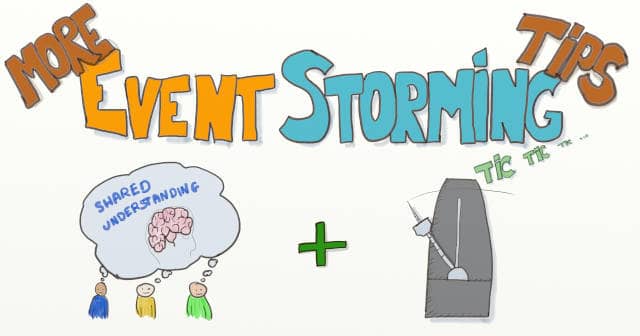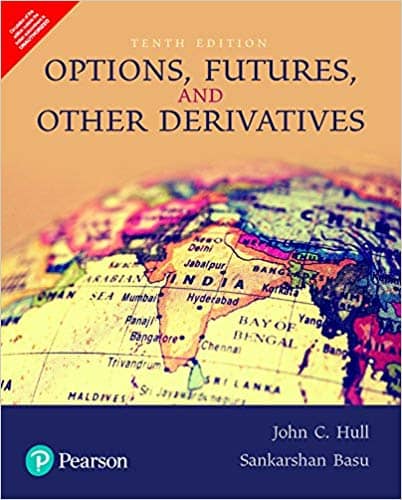21 More Event Storming Tips - Part 1 - Understanding and Rhythm
You’ve just invited 10 people to join your 8h Event Storming. Here are 9 Event Storming tips to maximize knowledge sharing and the use of everyone’s time.

When we ran the first Event Storming workshop at Murex, it was an all-new practice. Fast forward a few years, it has become a standard. As the method is spreading, we are also discovering new best practices.
Learning and Sharing
The main output of Event Storming is shared understanding. Here are a few tips to maximize this.
1. Distribute domain-specific learning material
If you work in a complex domain, there is a lot to learn for developers. Think of newcomers, for example. They will have a hard time understanding all the discussions during the workshop. Fortunately, most of these complex domains have read-made reference learning material.
For example, financial software has “The Hull”. It’s like the bible of finance. Sharing snippets before the workshop will help people to hit the ground running.
Domain experts can have a crucial role here. Compiling some specific material for a particular workshop will be even more useful!
2. State the goal ‘sharing over learning’
The feedback I often get from domain experts is: “I did not learn that much.” Here is something I now always say at the beginning of an Event Storming. “The goal is 1st knowledge sharing, 2nd learning”. You can even cite, or display Alberto Brandolini’s tweet:
@tpierrain @mathiasverraes "it's developer's understanding, not your knowledge that becomes software" I once said. Guys seemed to understand
— Alberto Brandolini (@ziobrando) August 21, 2015
3. Playing the silliest person in the room
One of Alberto’s tips is to play the silliest person in the room. It turns out it’s more complicated than it seems!
Playing the silliest person means asking candid questions. You’ll have to follow the content of the workshop to ask these questions. Following the content at the same time as facilitating is tricky. If you’re a beginning facilitator, ask someone else to play the silliest person in the room 😉
4. Ask a new-joiner to collect definitions
It turns out newcomers are perfect for playing this candid role! If you can, ask a newcomer to write down definitions during the Event Storming.
Newcomers don’t know much about the domain or the company, so they will detect all buzzwords. By being active, they should also learn better!
Rhythm
Let’s admit it, Event Storming is pretty intense. Here are a few best practices to make it sustainable and as useful as possible.
5. Twice 2 hours per day
It can be tricky to get people to dedicate 1 or 2 full days to a workshop. After 4 hours of Event Storming, people also get too tired to be effective.
The best schedule we found around these problems is to do two times 2 hours per day.
- 2 hours in the morning
- lunch
- 2 hours in the afternoon
- repeat for as many days as needed
People will have time to rest. The breaks will also trigger their System 2 brains. They might come back with new smart ideas!
6. Use breaks
Breaks are crucial for the Event Storming to go well. People will need them to maintain enough energy, but we can also use them for facilitation. I usually use a Double-Pomodoro technique and break every 50 minutes.

After the narrative storytelling, the agenda of an Event Storming is very flexible. Breaks are the best opportunity we have to decide what to do next. Take the time to think about how the workshop is going. Try to discuss with some participants, get their feeling, and adapt the agenda.
You can skip some activities to leave more time for others. Or you can decide to dive in a Design-Level Event Storming on a particular subdomain. There is an infinity of options depending on your challenge.
7. Adapt with ROTIs
With the large audience of an Event Storming, it’s easy to lose track of how things are going. We found that having a quick ROTI (Return On Time Invested) check every 2 hours helps.

It’s straightforward if you follow the 2 hours chunks. Take 5 minutes before long breaks to get their feedback about the session. Use this feedback to decide on what aspect of the problem to work on next.
8. Re-narrate for new-joiners
It’s a fact: some people will miss parts of the workshop. Many of us suffer from overbooked agendas. Finding 8 hours where everyone is available is not easy. Some people will miss the beginning, the end, or a part in the middle.
New-joiners will have a hard time catching-up when collective intelligence is already growing. A good workaround is to re-narrate whenever someone joins.
The 2 hours chunks schedule also makes this easy. Plan 10 minutes at the beginning of every chunk for this storytelling.
9. Leave with actions
Here is one thing you don’t want:
- have your Event Storming
- build some shared understanding…
- …and do nothing with it!
To avoid this, take 30 minutes at the end of the workshop to agree on the next steps. It’s crucial to define actionable tasks with an accountable person for each.
You can read more about the next actions in “5 Views to Capture the Outputs of an Event Storming workshop”.
More tips in next posts
This was the first of a 3 posts series compiling Event Storming best practices. Next post will contain tips about facilitation and dealing with existing code.





Leave a comment